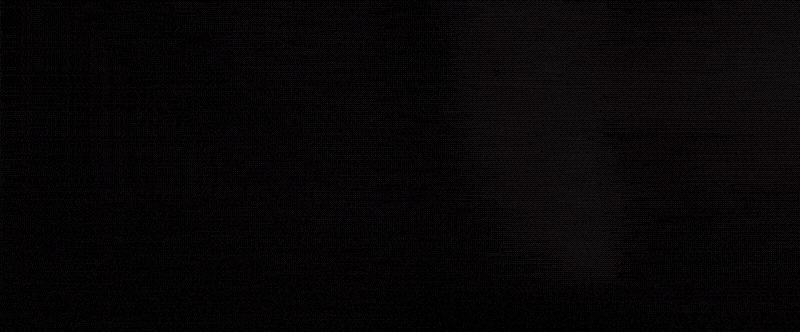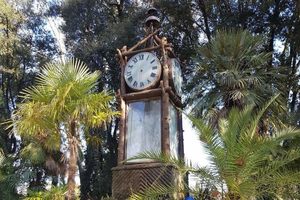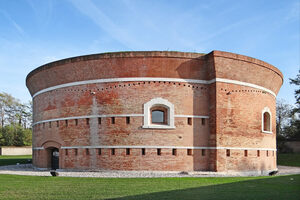How They Shot ‘WandaVision’ with One Camera and 47 Lenses
Welcome to World Builders, our ongoing series of conversations with the most productive and thoughtful behind-the-scenes craftspeople in the industry. In this entry, we chat with Jess Hall about WandaVision’s cinematography.
How do you do this? The question fired through Jess Hall‘s brain like a bullet. On his desk, there were nine scripts and seven requested looks. Each episode was designed as a celebratory tour through television history, but underneath that sitcom gloss, there also had to be a level of darkness held over from the show’s deadly serious shared universe. The cinematographer had never encountered a project like WandaVision before, and its possibilities sent quizzical shivers through his system.
“It was overwhelming,” he says.
Realizing one cinematic canvas is hard enough, and it comes with an endless stream of problems requiring quick solutions. Multiplying an already colossal endeavor by seven felt absurd. Yet, if Hall could not replicate The Dick Van Dyke Show and Modern Family, plus the other primetime shades that fall between, then WandaVision would fail its heroine.
From its premiere, we sensed how Wanda’s television fantasy operated as a panacea. Her childhood TV comedies represent a reality where hijinks trump trauma. It’s a blissful realm with no room for Thanos, dead lovers, or dead brothers. Crumbling from unbearable loss, the Avenger sought the safety of boob tube trends and cliches.
To underscore the agonizing thrum beating beneath everything, the sitcoms could not waver in their authenticity. A chink in the armor could decimate the illusion and betray Wanda’s internal strife. Hall was tasked with building a time machine through his lens. WandaVision is a week-to-week period film that sheds its eras as quickly as Wanda (Elizabeth Olsen) can flick her wrist or twitch her nose.
“One of the things that I did very early on,” explains Hall, “was say, ‘I’ve got to simplify this show somehow.’ When you’re working on a production, it’s busy. You don’t want too many elements. I didn’t want a bunch of vintage cameras that we’re going to break down in the heat or the rain. It had to have a bulletproof and efficient system. I made the call to use one camera platform throughout.”
Hall landed on the ARRI ALEXA LF as his instrument, but keeping it simple also meant prepping forty-seven different lenses, several of which were customized. While he could not hop in Doc Brown’s DeLorean, he could yank old lenses from the past and give them a whirl on his camera. Pre-production was a period of tremendous trial and research.
“We did a lot of experimentation testing,” he says. “I would get a camera, and I would experiment with some color science. Try a bunch of lenses and see what kind of color palettes we’d have. I’d get some fabric swatches, some wall swatches from the art department, and try different lighting techniques.”

The ALEXA LF allowed Hall to capture a 4K image. Mastering at the highest quality, the cinematographer could then massage the color to match whatever era’s specific style and tone. It became a game of reverse engineering.
“I had to get into the color science basically,” says Hall. “I had to manipulate it in order to put a window, or my period, into the camera so that it interprets the data and gets me something like where I need to go. On top of that, I can put my lensing and use period lighting. Then, I built a shot vocabulary, a type of composition, an aspect ratio, and all the rest of it.”
Production rushed upon Hall. While he was still working on the visual language for the ’60s, ’70s, and ’80s, he had to get to the hard work of actually shooting the first episode. And not just any first episode, but one shot in front of a live studio audience.
“As if things weren’t complicated enough,” Hall exclaims. “Now you’re doing a twenty-six-minute single-take in front of a live-audience, effectively. I mean, yes, you get to down your lights while the set changes, but other than that, you’re running concurrently. It’s a live performance. Huge challenge.”
With his camera operators on headsets, Hall and his lighting console technician called directions while on the fly. The experience was nerve-wracking but also equally exhilarating. All bases had to be covered, even the ones he couldn’t predict.
“You’ve got to light the set and make it photographable from one-hundred-and-eighty degrees,” he explains. “You’ve got maybe a camera from the front shooting a wide shot and then two cameras from each ninety degrees off-angle. So, really, your lighting has to work from one-hundred-and-eighty degrees. You need to leave a view for the audience, so you can’t have fixtures on the floor, and then you’re doing live lighting cues.”

At the end of WandaVision Episode 3, Wanda ejects Monica Rambeau (Teyonah Parris) from her ’70s sitcom surroundings. After she’s propelled through the Hex barrier, Monica lands in the Marvel Cinematic Universe (MCU) reality with its own aspect ratio (2:40) and color scheme. Bringing the outer cinematic world into the Disney+ arena presented another unique spectrum to duplicate.
“If you look at the history of lighting,” says Hall, “[Episode 3] is in the film and television lighting era. It’s very much studio lighting with these big, old-fashioned Fresnel heavy lights. Then you go into this MCU world, which is much more lit by the idea of practical lighting motivated by real sources that you can see and show.”
The MCU exists in a much darker color palette. Along with the aspect ratio shift, Hall also switches his lenses into 1.3 anamorphic. When WandaVision Episode 4 begins, and we explore Monica’s resurrection after The Blip, Hall goes full-throttle into the Marvel Studios aesthetic.
“We have one shot that follows Monica through [the hospital],” he says. “We reveal the Blips coming back, and she collides with one of them. It was this long choreographed one-er, which is something that we hadn’t had the license to do within the vocabulary of the ’50s to the ’70s. It was very enjoyable to choreograph and use a handheld camera, which we hadn’t done yet. Also, we got to get down and dirty and a bit gritty with the environment lighting.”
Using aspect ratios to communicate story was another unexpected gift. The chance to dance in this realm linked Hall to some of his favorite movies. Suddenly, he was a contender.
“It’s a fantastic tool to be able to play with,” says Hall. “I always loved that example in Raging Bull where it cuts to the Super 8 footage. The kind of dramatic tension that you can get from an aspect ratio change is really interesting. It’s this other arsenal in your toolkit.”
Marvel’s traditional 2:40 ratio arrives in WandaVision with a lightning bolt crack. It’s a zinger purposefully executed to elicit an intense response. Hall never lets audience expectations leave his mind. He knows the viewers are tracking every pixel in every frame.
“Especially the MCU fan base,” he says. “You’re telling them, ‘Okay, here we go. You’ve been patient with us. You’ve tolerated this period-work. We started with it, and now we’re going to give you what you’re more familiar with.’ I have a nineteen-year-old son, and he was literally cheering when that transition happened. So, it’s fun to work with [aspect ratios] as a dramatic tool.”

All of WandaVision‘s wacky worlds collide during Episode 7’s climax. We’re talking SPOILERS here, so please look no further if you’re not caught up on the series. The revelation that nosy next-door neighbor Agnes (Kathryn Hahn) is actually the witch Agatha Harkness comes complete with a spinoff credit sequence. Her Agatha All Along theme plays over a montage depicting WandaVision‘s various eras and aspect ratios.
“It was shot over the series,” Hall says. “We’d be on the set, say, for example, during the magic show [in Episode 2]. We weren’t going to go back to that set with that costume, so we had to capitalize on that time efficiency and execute that shot. It would generally be done at the end of shooting our other footage, and we’d be like, ‘Right, it’s the Agatha All Along moment.’”
These occasions sparked further creativity. To add an extra flair to these Agatha shots, Hall would incorporate an interloping piece of technology. Agatha is a magical invader, and her spinoff should reflect such mischief.
“Those moments were one-ers,” he says. “They’re all single shots, but we’d have a piece of equipment that wouldn’t be appropriate for the period — like a Technocrane or some camera move that was more sophisticated. We’d have to switch our heads into [an Agatha] mode.”
To film WandaVision was to be in a constant state of inventive flux. Every episode required swapping mindsets. The fluidity was a high — one that many of its involved creatives will be chasing for a while.
With the final episode of WandaVision airing this week, Hall reflects on his time with the series and recognizes it as his dream project. The chances seem unlikely that another property will come along demanding as many disparate looks. Certainly, those future gigs will present other difficulties, but what he’s learned on this series, and the rate at which he learned it, will aid him going forward.
The WandaVision finale airs this Friday on Disney+.





